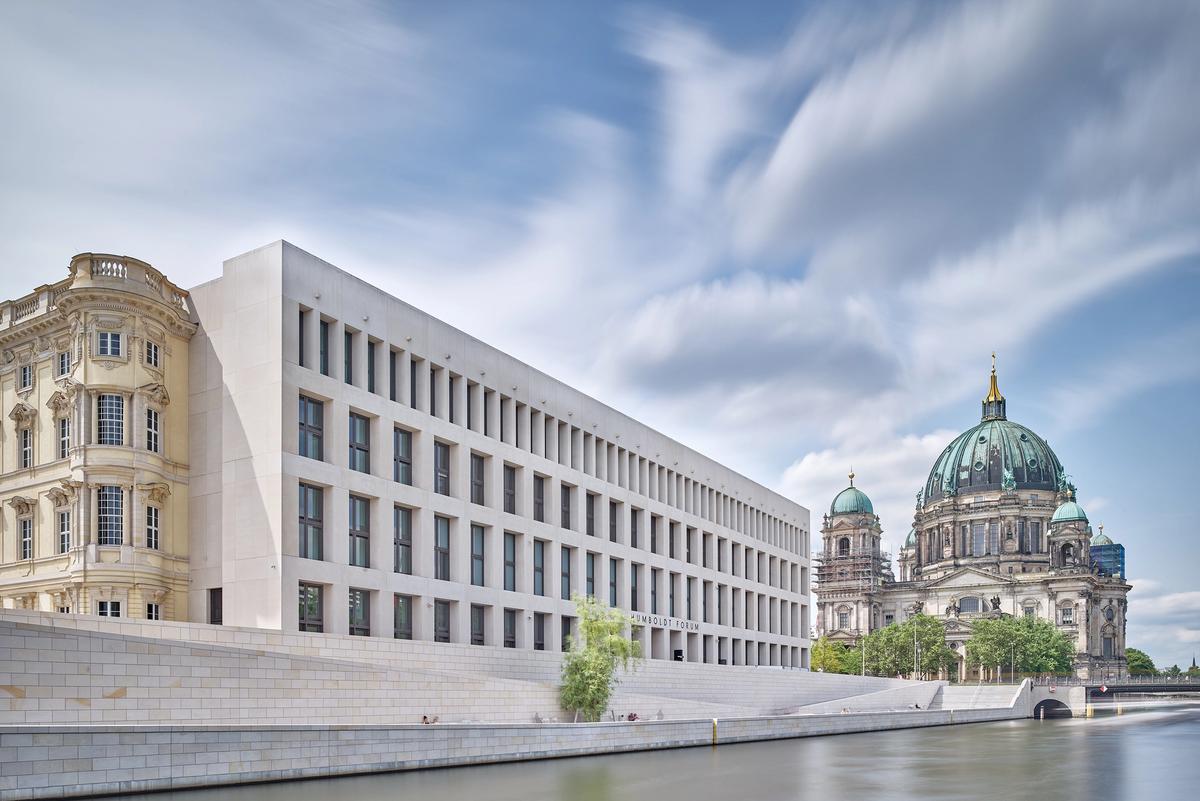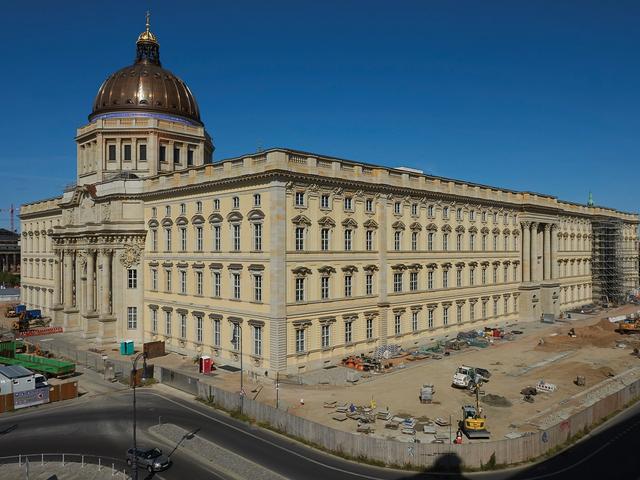Hardly any building project in Berlin has been as controversial as the Humboldt Forum, criticised for its form and content ever since its conception 20 years ago. After a gradual opening since December 2020, the remaining galleries of the East Wing opened to the public on Saturday (17 September), celebrated with a 24-hour event. The newly opened, 16,000 sq. m gallery spaces include 20,000 objects from African, Asian and American collections from the Ethnological Museum of Berlin and the Museum of Asian Art—which both belong to the Prussian Cultural Heritage Foundation—as well as six temporary exhibitions. The 40,000 sq. m complex located right in front of the Museum Island in the heart of the German capital is now complete—at least from a material point of view.
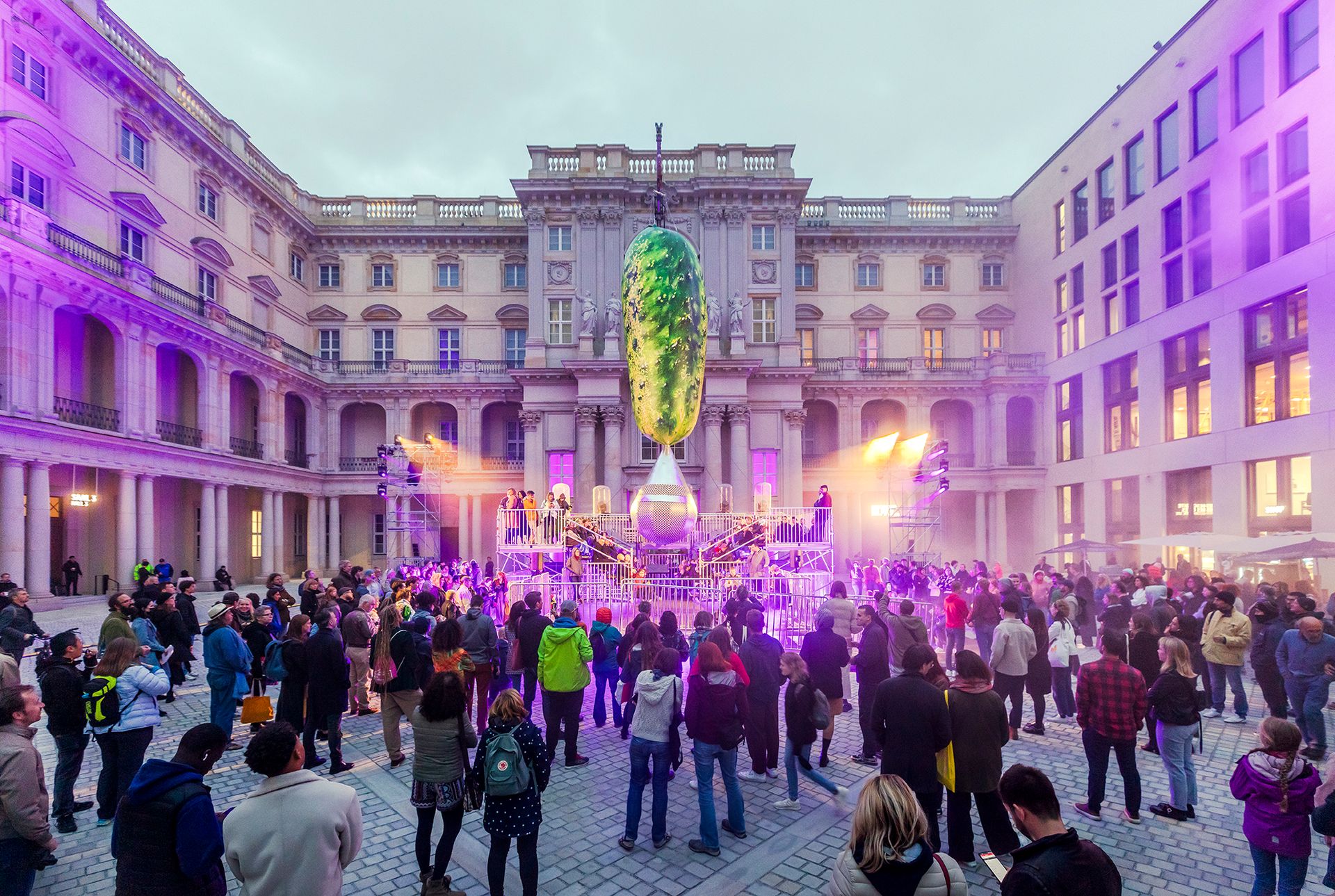
The 24-hour opening event for the Humboldt Forum's East Wing was more reflective than celebratory Photo: Stiftung Humboldt Forum im Berliner Schloss / David von Becker
“The house stands, but the work inside and around the building, begins now,” emphasised the German Minister of Culture Claudia Roth in her opening speech. The festivities were limited, and there was little room for self-praise and congratulations. “From a subject of debate, the Humboldt Forum now becomes a place of debate,” added Roth. The museum was a difficult birth indeed: once the royal palace of the Hohenzollern family—who ruled the kingdom of Prussia and, from 1871 to 1918, reigned over Germany as emperors once—the communist East German government decided to destroy the building that had been badly damaged in the Second World War and then rebuild a copy, the decision to house the Humboldt Forum within the complex was controversial. Besides the exorbitant costs (around €680m), voices rose against the Christian cross adorning the Palace’s dome, and the fact that the Humboldt Forum would exhibit looted artworks seemed contradictory to the self-reflected spirit of progressive Berlin.
'Better criticism than ignorance'
The conclusion of the Humboldt Forum's opening seemed to cause a feeling of relief among stakeholders, including the general director, Hartmut Dorgerloh: “We feel strengthened in our mission and self-image that we are not a museum and certainly not a palace. It is important to know that politics back us,” he told The Art Newspaper. The first 24 hours of the full opening attracted 25,000 people into the Forum, which offered a Documenta 15-like programme combining roundtables, workshops and concerts.

A community meeting held as part of the opening of the Humboldt Forum's East Wing Photo: Stiftung Humboldt Forum im Berliner Schloss / David von Becker
The Humboldt Forum's omnipresence in the media, even the negative headlines, could end up being beneficial to it. For Hermann Parzinger, the director of the Prussian Cultural Heritage Foundation, “the debate has helped the project” and made it “more creative” he said in the opening speech, adding in a separate interview: “better criticism than ignorance [...] this isn’t a conventional museum but a place of negotiation”.
Indeed, the final opening was impregnated by cautious wording and self-criticism: this is a “healing process”, says Roth. The essence of the Forum’s narrative relies on contextualisation, reconciliation and historical non-Eurocentric reappraisal: co-curating has turned into a kind of mantra. For Dorgerloh, the “concept of museum should be rethought as a place that is not dedicated to objects primarily but to people”.
The galleries dedicated to the historical Kingdom of Benin, in todays’ Nigeria, have drawn particular attention. Next to its announcement to return objects to Cameroon, Namibia and Tanzania in June this year, the Prussian Cultural Heritage Foundation also approved the restitution to Nigeria of more than 500 Benin bronzes that were originally plundered by the British in 1897 and later acquired by Germany at an auction in London. According to Dogerloh: “Without the Humboldt Forum this political decision wouldn’t have happened now already. I made clear that there must be a decision before anything is exhibited here, as it couldn’t have been exhibited as originally planned”. Instead of the original 200 Benin pieces planned for display, the Forum now shows 40 items, on loan for ten years by Nigeria’s national museum commission.
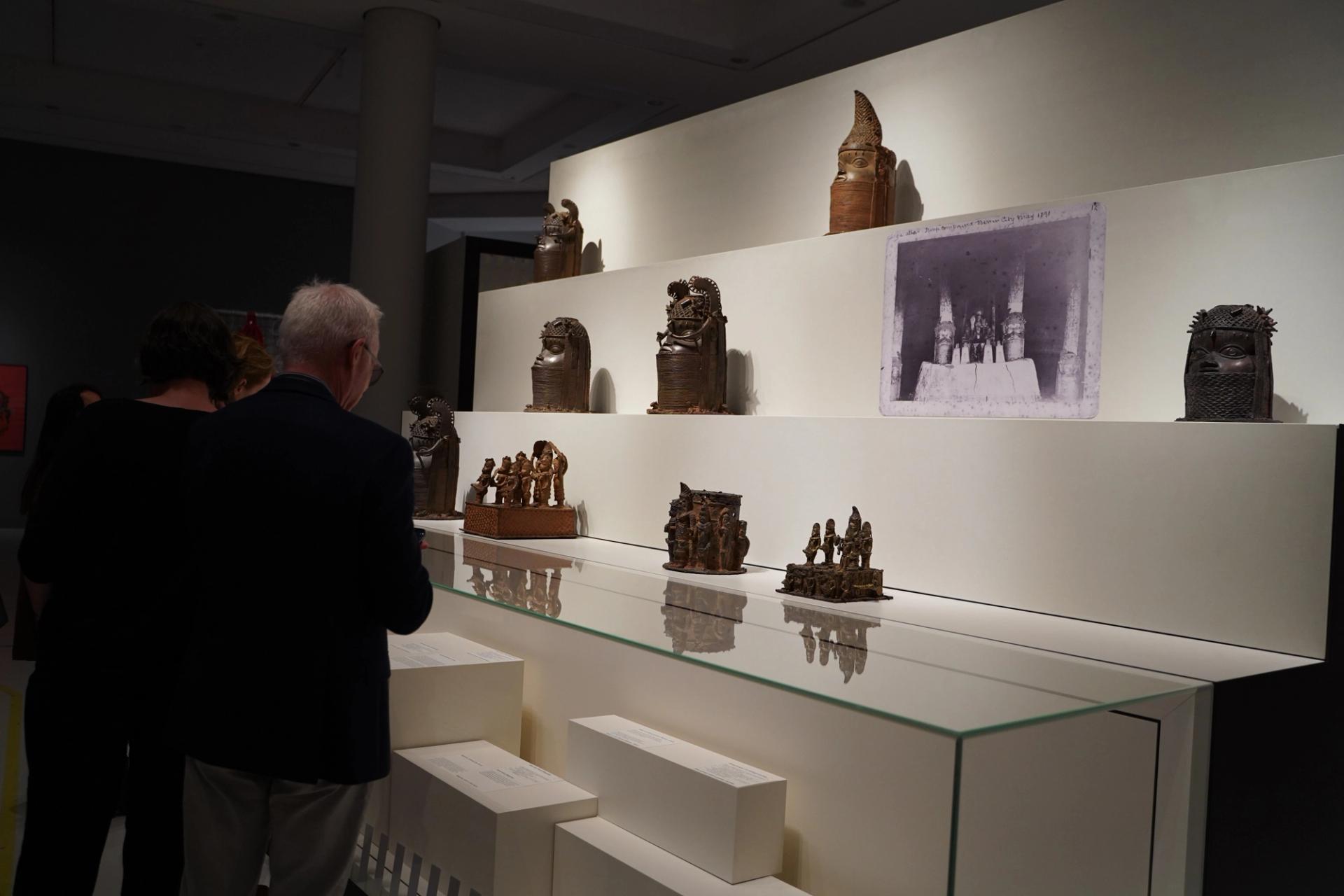
The Humboldt Forum's re-imagine Benin bronze display, following negotiations to return the items that were looted from Nigeria Photo: Lara Bommers
The Nigerian artist Enotie Paul Ogbebor, who works closely with the Benin Dialogue Group (the consortium of western museums negotiating the return of looted items to Nigeria), says the Humboldt Forum has shown a collaborative approach but that it is “not enough”. "We feel the [Humboldt Forum's] involvement a little bit more, especially in developing the narratives, but it’s not entirely from our perspective,” he tells The Art Newspaper. To push the idea of decolonisation further, Ogbebor suggests that the museum should “actually employ people from these countries as part of their curator teams, having them here to put all this together”. To him, the importance resides not only in the restitution of objects but in the “restitution of knowledge” and “opportunities”. With regards to the Edo Museum of West African Art that is planned to open in Benin City to house such restituted objects, Ogbebor suggests that the collaboration with the Humboldt Forum should not be the source of “victimisation” but enable capacity building including training locals for conservation and management.
Different acquisition process, different curatorial approach
Some communities have expressed pride and gratitude for the collaboration with German curators at the Humboldt Forum. Wynema Morris, a lecturer at the Nebraska Indian Community College and a member of the Omaha tribe, was approached to help shed light on the cultural items that the ethnologist Francis La Flesche (1857-1932) collected amongst the Native American Omaha community in the Mid-West, which were later sold to Germany. Through the collection of the Ethnological Museum, Morris discovered new items that enabled her to reconnect with her ancestors’ history. Morris enthusiastically told The Art Newspaper about the discovery of a plum stone game that she will now teach to her students herself. The Omaha people are not asking for the return of any objects, as Morris explains: “It’s Berlin’s property, they bought them. Even if we wanted to negotiate some sort of return, we don’t have any means to secure and maintain them to avoid deterioration.”
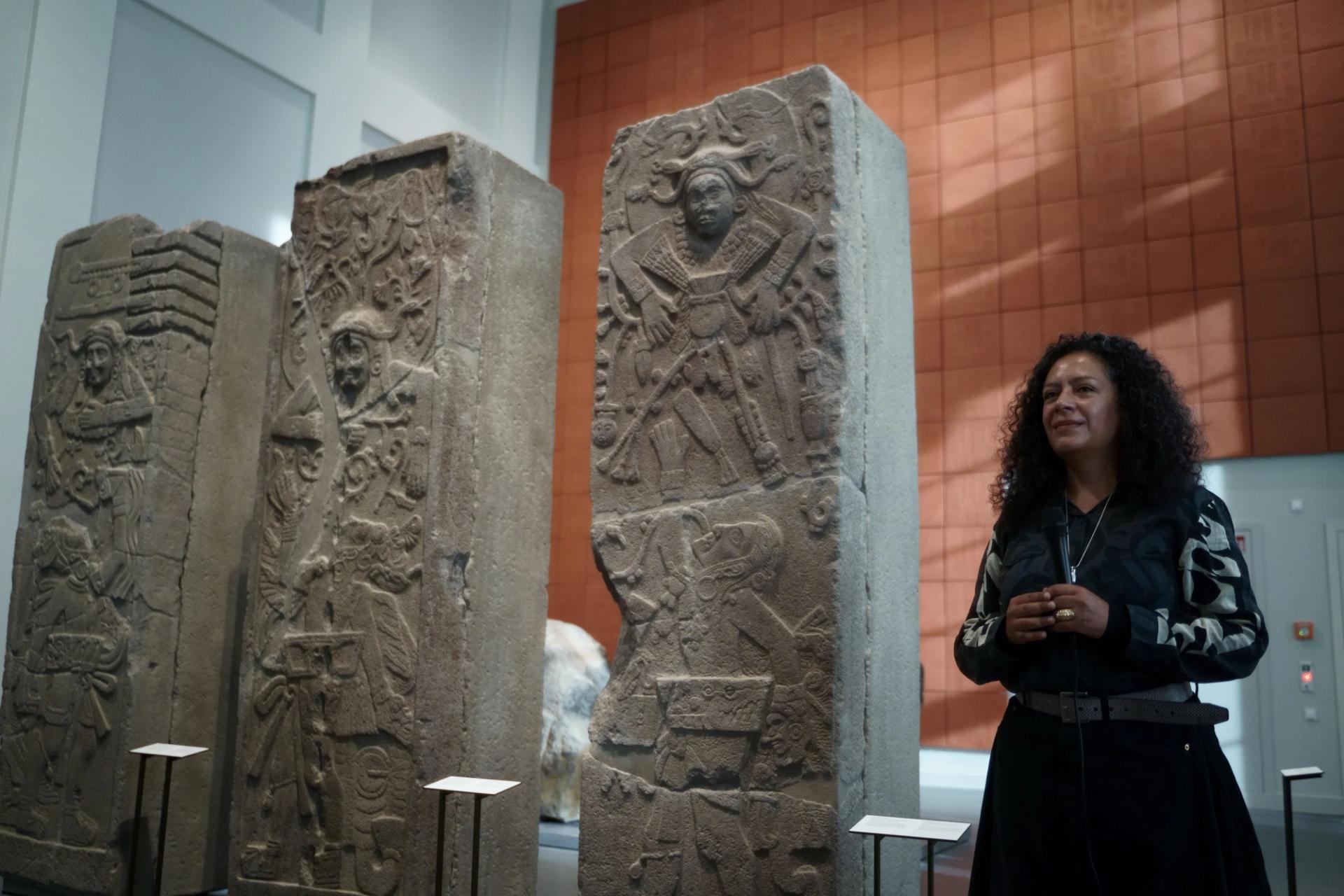
The artist Mariana Castillo standing beside Cotzumalhuapa stelae (650-950 AD) in the Humboldt Forum's Mesoamerica exhibition hall, with her own monumental installation in the background Photo: Lara Bommers
While items from the Ethnological Museum of Berlin and the Museum of Asian Art are subject to ongoing research and debate of provenance and return, some specific artworks of the Humboldt Forum’s East Wing are less controversial, since they are in fact new. This is the case of Mariana Castillo Deball’s Codex Humboldt Fragment 1/ Codex Azoyú Reverse 2, a terracotta installation in a relief-like form that represent Mesoamerican artefacts that the geographer, naturalist and explorer Alexander von Humboldt (one of the famed scientist brothers that the museum is named after) found in Mexico and brought to Berlin in the 19th century. Nine years after having been invited by the Ethnological Museum to work on this project, Castillo is just happy that the project is finally accomplished: “I am not nationalistic, I don’t think in terms of Germany and Mexico. It’s not a diplomatic work: it’s just a work of me as an artist.”
But "art for art's sake" seems out of reach for this forum-museum that is still in quest of an identity.


